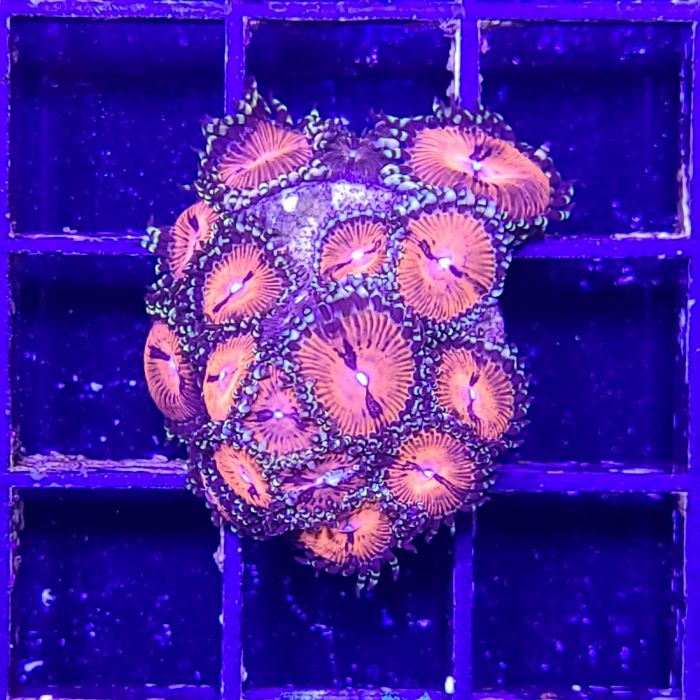Bloodsucker Zoa
This coral receives much of its energy by utilizing the photosynthetic algae contained within its tissues. It also depends on absorbing nutrients from the water, and will benefit from occasional feedings of zooplankton and coral snow. Zoanthids are often covered in a heavy mucus layer which helps them capture prey. Many types may be voracious feeders if offered meaty items, especially those corals with long tapering tentacles. Their sting is quite mild, however they can grow fast enough to over-grow other corals, so adequate space should be provided to accommodate future growth. Those species with shorter tentacles typically require higher water flow than those with longer tentacles, and all types will benefit from bright light.
Most species contain toxins in their mucus and tissues, including the potent neurotoxin palytoxin, which may be dangerous to humans. It is important not to underestimate this toxin- gloves are highly recommended when handling this coral.
Neon, Metallic, Nuclear, and most definitely, Ultra, each of these corals adds a dazzling effect to the reef. Each colony is intensely hued and most fluorescence brightly under actinic lighting. Colors may be hot pink, bright blue, intense scarlet, emerald green, or any other color or combination of colors. This coral is collected from Australia, and may grow peacefully beside another color variety, making it possible to create a garden of rainbow colors.
Sand Zoanthus polyps are a type of Zoanthid, also called colonial anemones. They grow in a cluster by budding, and are attached at the base by runners or a mat. Occasionally blowing the colony with a baster or powerhead will help clear detritus from between the polyps and discourage nuisance algae. They are very hardy and are quite tolerant of poor water quality. However, they may be prone to pests such as predatory nudibranch, sundial snails, spiders, some Asterina sp. starfish, and zoa pox infection. Dipping the coral before adding to a display aquarium is highly recommended. Some fish may also nip on them.
- Difficulty: Easy
- Growth Speed: Fast
- Lighting: Medium - High
- Average Placement: Middle - High
- Water Flow: Medium - High
- Temperament: Semi-Aggressive
Customers who bought this also purchased
 Duncan - CommonOut of stock
Duncan - CommonOut of stock Hammer - Bi-Color BranchingOut of stock
Hammer - Bi-Color BranchingOut of stock Fire and Ice ZoaOut of stock
Fire and Ice ZoaOut of stock Convict Blenny (Asia Pacific)Out of stock
Convict Blenny (Asia Pacific)Out of stock Alveopora - Assorted B GradeOut of stock
Alveopora - Assorted B GradeOut of stock Alveopora - Assorted A GradeOut of stock
Alveopora - Assorted A GradeOut of stock Blastomussa - CommonOut of stock
Blastomussa - CommonOut of stock
















